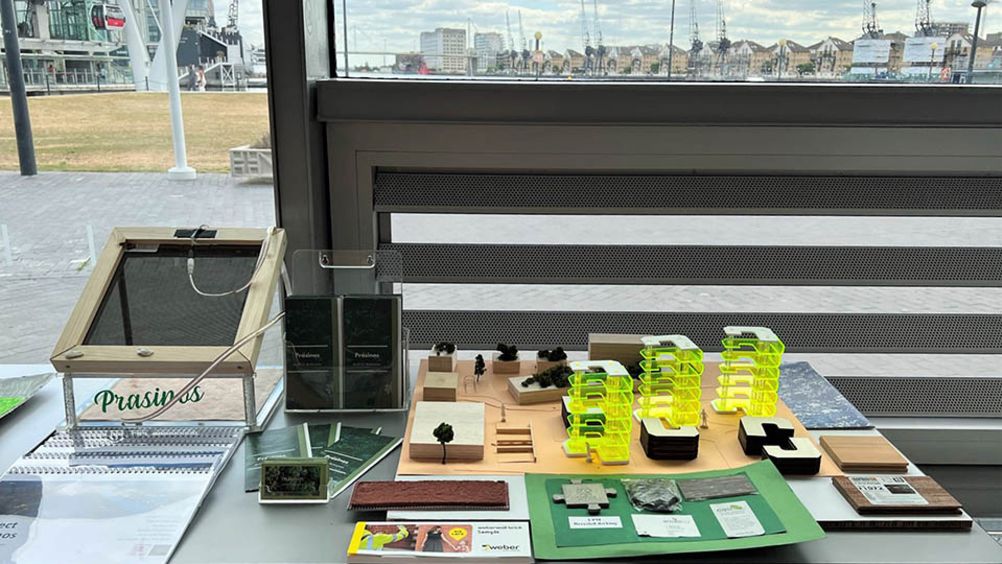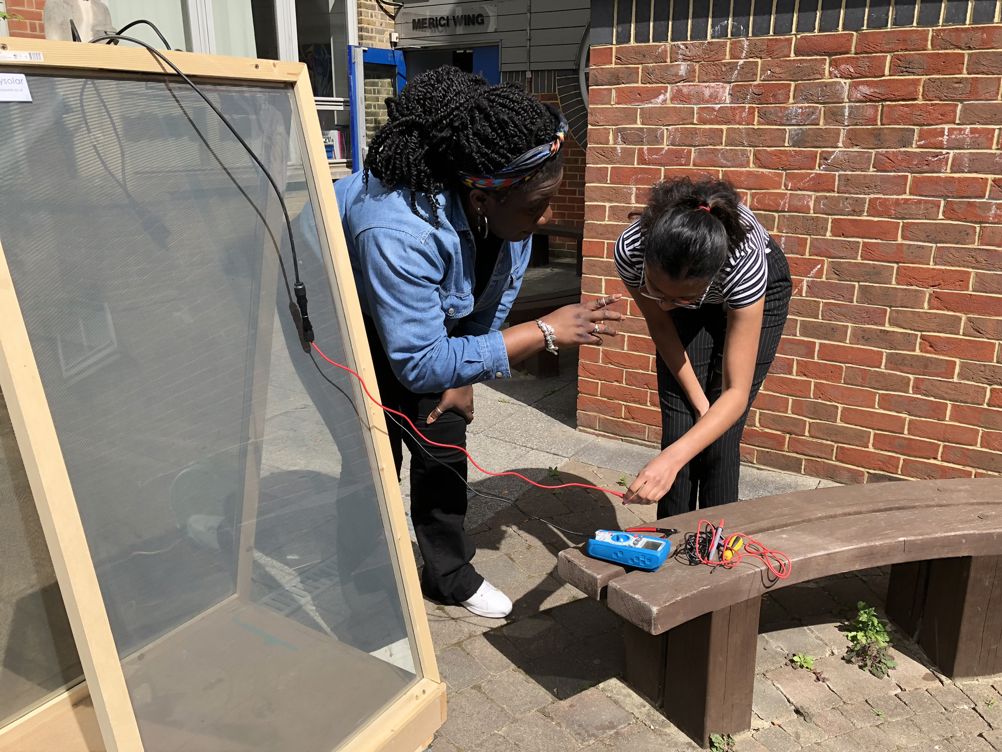Category: Young Innovator - sponsored by Hays Recruitment
Headline sponsor: Babcock International Group
Project: Project Prasinos
Partners: The Ursuline Academy Ilford, Polysolar and Saint-Gobain
Among the many huge efforts needed to reach net zero by 2050, lies the issue of designing more sustainable buildings, something that will require cross-disciplinary innovation from sectors including construction and energy.
This winners of this year’s C2I Awards’ Young Innovator category had just this in mind, as they put forward their concept for a practical building solution, capable of generating its own renewable electricity as well as encouraging biodiversity and plant growth to absorb more carbon dioxide from the atmosphere.
The ‘Project Prasinos’ (PP) team, a group of students from the Ursuline Academy Ilford, described its design as accessible and inclusive, revolving around renewable energy from transparent photovoltaic (PV) glass solar panels, provided by project partner Polysolar.
Polysolar is a Cambridge-based developer, designer and architectural solar solutions installer. Its latest transparent solar panel has a layer of thin photovoltaics embedded in the centre, allowing for conversion of light to electricity. The PP team worked with the company’s CEO, Hamish Watson, who acted as a mentor to the students and assisted with the solar energy concepts for the building design.
Also collaborating on the project was materials and manufacturing company Saint-Gobain, whose sales manager Tim Martin worked with the team to provide resources and samples of its eco weberwall brick system for the building design’s external façade.
The concept underpinning Project Prasinos is for a sustainable community situated in London’s Royal Docks, an idea that was sparked by the brief for the Mayor of London ‘Design Future London’ Challenge in 2022. The team envisions that the riverside Silo D building could be used to store renewable energy for electrics and hydrogen fuel, as well as being used as a vertical farm.
“Having been either winners or shortlisted in previous sustainable competitions has made the team more aware of the environmental challenges the world faces, and the role they felt they could play in tackling them,” said Rose Russell, a STEM co-ordinator and teacher at The Ursuline Academy Ilford, who oversaw the team’s project.
“Half the world’s population now lives in cities. With cities getting hotter and drier than ever before and more sterile, it is such green infrastructure, on and around our buildings, which will make our cities better places to live in and more resilient to climate change. We know that biodiverse green infrastructure will provide the ecosystems we need, including better microclimates, clean air, and clean water where we live. The journey to net zero commitment is just the first step.”
Russell said that replacing fossil fuels with renewable energy was an issue the students were very passionate about in their design of a community where homes could use less energy to run than they would generate on site.
“Aimed at buyers with very little disposable income in the first years of owning, they thought it would be also a good incentive to design a footprint resulting in zero to low fuel bills for the future of the owners and an imperceptible carbon footprint,” Russell told The Engineer.
“When we throw in furniture made from recycled materials, a communal foraging garden and green roofing and other perks, it will quite possibly be a taste of how all new homes will be built in the future.”

The large-scale zero carbon building has been designed so that the Polysolar glass panels embedded into the building’s structure can be used to power the building, and a pollinator-friendly ‘green roof’ would encourage plant biodiversity whilst taking in more CO2 and encouraging the critical role of bees in the ecosystem.
The building design also includes coats of special white barium sulphate paint, which is environmentally safe, common to find and cheaper by roughly half compared to titanium oxide powder used to create typical commercial white paint, the team said.
Able to reflect up to 91.8 per cent of sunlight, the team believes the paint could be used to lower temperatures like a ‘natural air conditioner’ – outdoor tests showed that it kept surfaces 19°F cooler than their surroundings and 8°F cooler under strong noon sunlight. Additionally, the lightweight, flexible and weather-resistant weberwall brick system from Saint Gobain is formulated from 95 per cent minerals and bound in cross-linked polymers, used as an alternative to traditional bricks.
Polysolar’s thin film panel technology has been specifically designed for BIPV (building integrated photovoltaic) applications, and as a result offers performance advantages in several ways, the team explained.
Firstly, thin film solar cells can run at a high level of efficiency even when not placed at an optimal angle for the absorption of direct sunlight. This means there is greater potential for installation, including being placed vertically on buildings without compromising efficiency. The solar cells can also operate in as little as ten per cent sunlight, extending the number of hours in which electricity can be produced over the course of a year and resulting in a more consistent energy yield.
Additionally, the panels are less affected by high temperatures and won’t need any ventilation to perform at optimal levels. The design costs £250 per square metre, and the team said their muti-functionality makes them an ‘economically superior’ choice – they are also extremely tough and rigid with laminated glass that works to increase their overall functionality.
“We were able to have the ambassador and the CEO, Hamish Watson of Polysolar, visit the school a couple of times in order to collect real-time and robust data on energy consumption calculations,” said Russell.

“Hamish kindly donated vital equipment which enabled the team to track and measure the energy produced as the solar glass panels were on our school site. This kit was an opportunity to scale the improvements and challenge their experimentation and use of data - affording them opportunities whilst at the same time trying to learn how to make sense of the digital data, its effectiveness and what had worked well and evaluate their findings and outcomes.”
The project has been over two years in the making, and the team hopes to be able to develop other areas for the design such as a hydrogen capture aspect, although this has been put on hold for now as they approach their GCSE exams.
“After two years of significant setbacks within education and learning, we were still facing challenges, and as covid restrictions eased, we made every effort to work closer with our partners,” Russell said. “To reflect on all these developments, we are happy that we can now draw on the experience as we were able to seek new ways to integrate more help and collaborate with Saint Gobain, now one of our two trusted partners, who have worked with us to evolve further.”











McMurtry Spéirling defies gravity using fan downforce
What a fun demonstration. I wonder if they were brave enough to be in the car when it was first turned over. Racing fan cars would be an interesting...